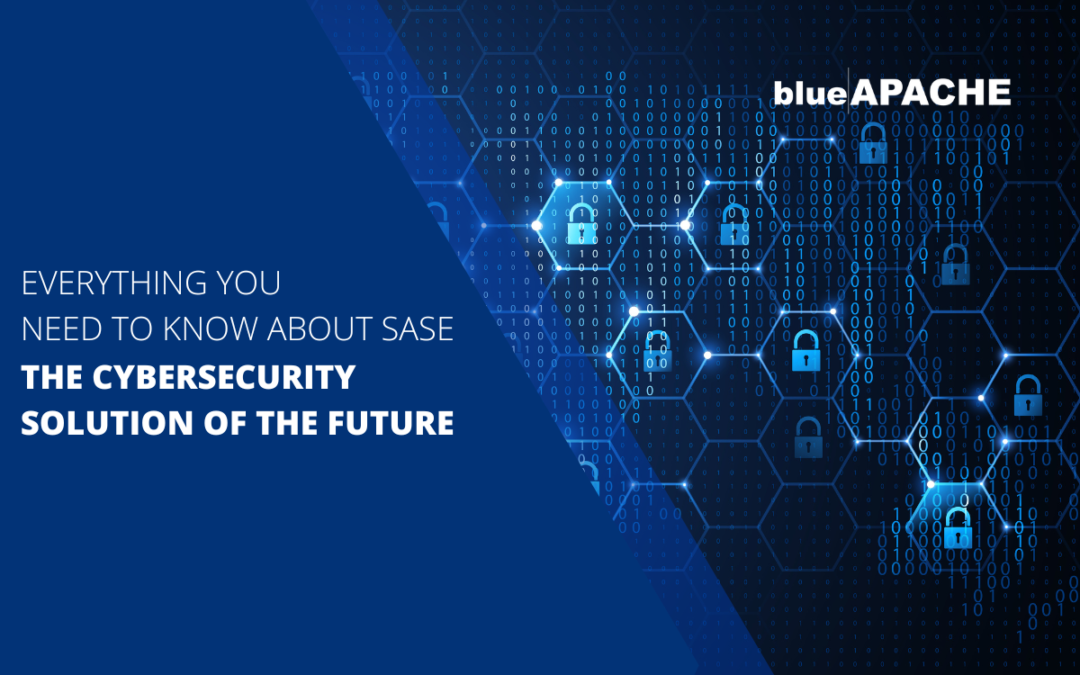One of the most significant challenges that businesses face today is to make business critical data available to employees wherever they are, over any bearer, on any device whilst protecting and securing their access and data.
To define the acronym, SASE (pronounced “sassy”) stands for Secure Access Service Edge, and it’s a technology solution that’s been created to help organisations meet this challenge.
With the ever-evolving threats and the possibility that one simple mistake could open your whole organisation to individuals with nefarious intent, keeping things under control has never been more important.
It’s important therefore to understand what SASE is, the problems it can help solve, and the benefits you can expect to receive. Plus, we’ll be providing a clear path for getting started with SASE in your business, so read on to learn about the latest in front-line cyber defence.
What is SASE?
SASE combines cybersecurity protocols such as cloud access security broker (CASB), Zero Trust and firewall as a service (FWaaS) with wide area networking (WAN) and packages them as a single, cloud-based service.
SASE solutions have been developed through the recognition that the old concepts of enterprise perimeters and edge devices are no longer fit for purpose when business critical systems are increasingly serviced from the cloud and hybrid work is the norm.
Gartner coined the term in a report entitled “The Future of Network Security is in the Cloud”, and defined SASE as being driven by “Customer demands for simplicity, scalability, flexibility, low latency, and pervasive security” which is forcing “convergence of the WAN edge and network security markets.”.
Put simply, this means that SASE is a cloud native solution that is designed to provide a familiar and seamless experience to hybrid/remote users through a combined network, identity and access, and security functionality.
What are the problems that SASE is designed to solve?
As society transitions to a phase where remote work is more widely accepted (and, in many cases, has become the norm), organisations have accelerated their adoption of cloud-based solutions for managing many aspects of their business, including workflow and collaboration.
While this has previously been secured through enterprise edge firewalls (protecting the premises), and VPNs (enabling access for remote users) the security and control limitations of these solutions were already clear and were made more pronounced with the rise in popularity of public cloud services, and collaborative suites such as Microsoft 365/Teams, Slack, Google Workspace and Zoom.
There was also a need to manage user’s access privileges based on not only the individual user or group access level but also incorporating device functionality, network capability and location factors.
In addition, SASE needs to manage threat registers, patches, software updates and more. Organisations increasingly don’t have the resourcing or capabilities to manage these issues across multiple systems and platforms.
So SASE will be designed to help organisations meet the challenge of providing a seamless workflow experience to users anywhere and on any device, the use of widespread cloud delivered solutions, and to ensure access, management and security controls are beefed up.
Key benefits of SASE
- Improved user experience, allowing a uniformity of workflow management regardless of device, operating system, network access type or location
- Enhanced, flexible and consistent security of data and network access for the new hybrid workforce
- Improved performance of higher bandwidth applications such as Zoom video calling and Teams meetings
- Much improved flexibility through a cloud-based infrastructure which manages a range of security and access policies and controls from one platform
- A reduction in complexity by combining a range of legacy solutions into a streamlined set of services that are much more straightforward for your IT team to manage
- Zero Trust approach supported, enhancing security by removing trust assumptions when users and apps connect to your network
- Significant cost savings can be realised through the deployment of a single platform to replace multiple legacy solutions
It’s important to note at this point that SASE as it stands is conceptual in that there is no one vendor that offers all the functions we describe in a single platform, although that evolution is underway.
How can I learn more about SASE and starting our transition?
The road to SASE will be about an evolution of services and capabilities, so you’re going to need a partner who is abreast of the latest developments in the field and can help you develop a strategic technology roadmap to guide your evolution. We have certified solution experts in networking, identity and access, and security who can support your organisation’s transition.
Why blueAPACHE?
With more than two decades of experience and a team of expert consultants, blueAPACHE is ISO 27001-certified and offers local 24/7 support. This makes us an ideal IT-as-a-service provider for all of your business needs.
To find out more, please contact us directly at:
1800 248 749

